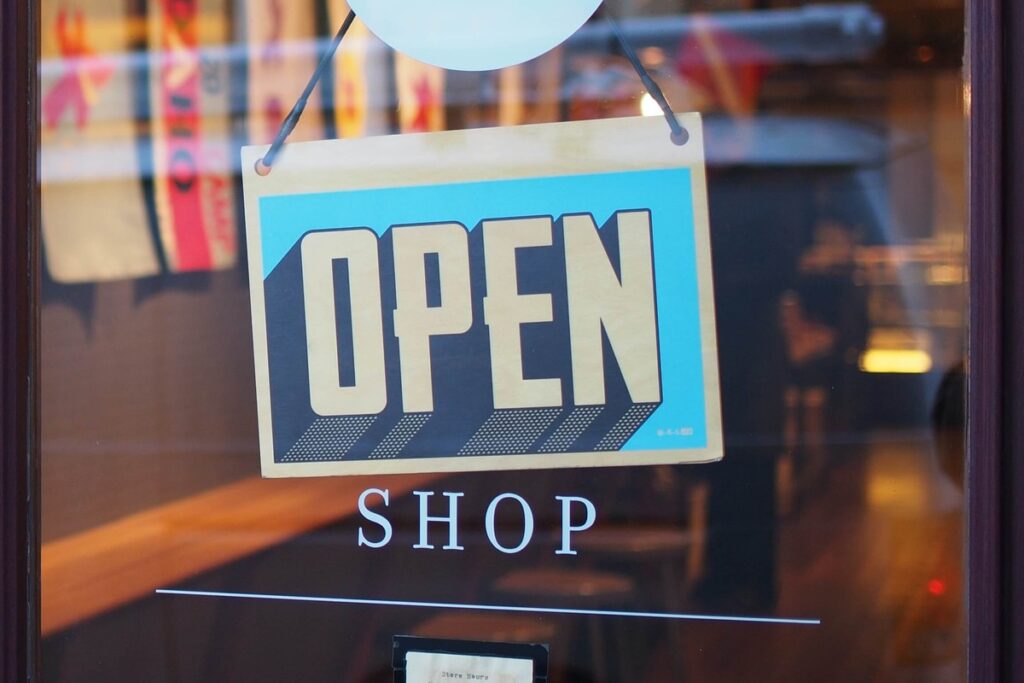Opening Up A Retail Shoe Store
Here is a step-by-step guide on opening up your own retail sneaker store. By following these best practices, you can successfully open your own physical commercial retail sneaker store while incorporating SEO best practices for content to attract customers and build a loyal customer base.

Your Digital Real Estate
Step 4: Build a Website
In today’s digital age, it is essential to have a website that showcases your products and allows customers to shop online. Build a website that is visually appealing, easy to navigate, and optimized for search engines. Make sure to include detailed descriptions and high-quality images of your products, along with customer reviews and ratings.
Step 5: Develop SEO Content
Develop high-quality, engaging content for your website and social media channels that provides value to your audience. This can include blog posts, videos, and social media posts that showcase your products and provide helpful tips and information. Ensure that your content incorporates SEO best practices, such as using keyword-rich titles, meta descriptions, and internal linking.
Step 6: Optimize Your Store for SEO
Optimize your physical store for SEO by incorporating elements that encourage customers to share their experiences on social media, such as photo opportunities, interactive displays, and customer reviews. Make sure to use consistent branding across all marketing channels, including in-store signage, product packaging, and marketing materials.
Step 7: Engage With Customers
Engage with your customers both online and in-store to build a loyal customer base. Use social media to share updates about new products, special offers, and events. Encourage customers to leave reviews and provide feedback to improve your products and customer service.
Step 8: Monitor Your Analytics and Adjust Your Content Strategy
Use analytics tools to track your website traffic and user behavior, and adjust your content strategy accordingly. This can include identifying which types of content are most popular, which keywords are driving the most traffic, and which social media channels are most effective.

Owning your own retail sneaker location can be a dream come true for many sneaker enthusiasts and entrepreneurs.
Here are some of the benefits of owning your own retail sneaker location:
Greater Control: When you own your own retail sneaker location, you have complete control over the products you sell, the store layout, and the customer experience. This means that you can curate a unique collection of products, design a store layout that reflects your brand and style, and create a customer experience that sets your store apart from the competition.
Increased Profit Potential: Owning your own retail sneaker location can be a profitable business venture. By buying and selling sneakers at a markup, you can earn a profit on each sale. Additionally, owning your own store means that you don’t have to pay a percentage of your profits to a third-party retailer or e-commerce platform.
Customer Loyalty: When you own your own retail sneaker location, you have the opportunity to build a loyal customer base. By providing excellent customer service, offering unique products, and creating a welcoming store environment, you can create a community of sneaker enthusiasts who return to your store time and time again.
Flexibility: As the owner of a retail sneaker location, you have the flexibility to adjust your business strategy based on market trends and customer demand. You can adjust your product offerings, pricing, and marketing strategies to keep up with changing consumer preferences and stay ahead of the competition.
Personal Satisfaction: For sneaker enthusiasts, owning a retail sneaker location can be a source of personal satisfaction and fulfillment. By sharing your passion for sneakers with others, you can create a business that reflects your personal interests and values, and build a career doing something you love.
Overall, owning your own retail sneaker location can be a rewarding and profitable business venture that allows you to share your passion for sneakers with others, build a loyal customer base, and create a unique shopping experience for your customers.
